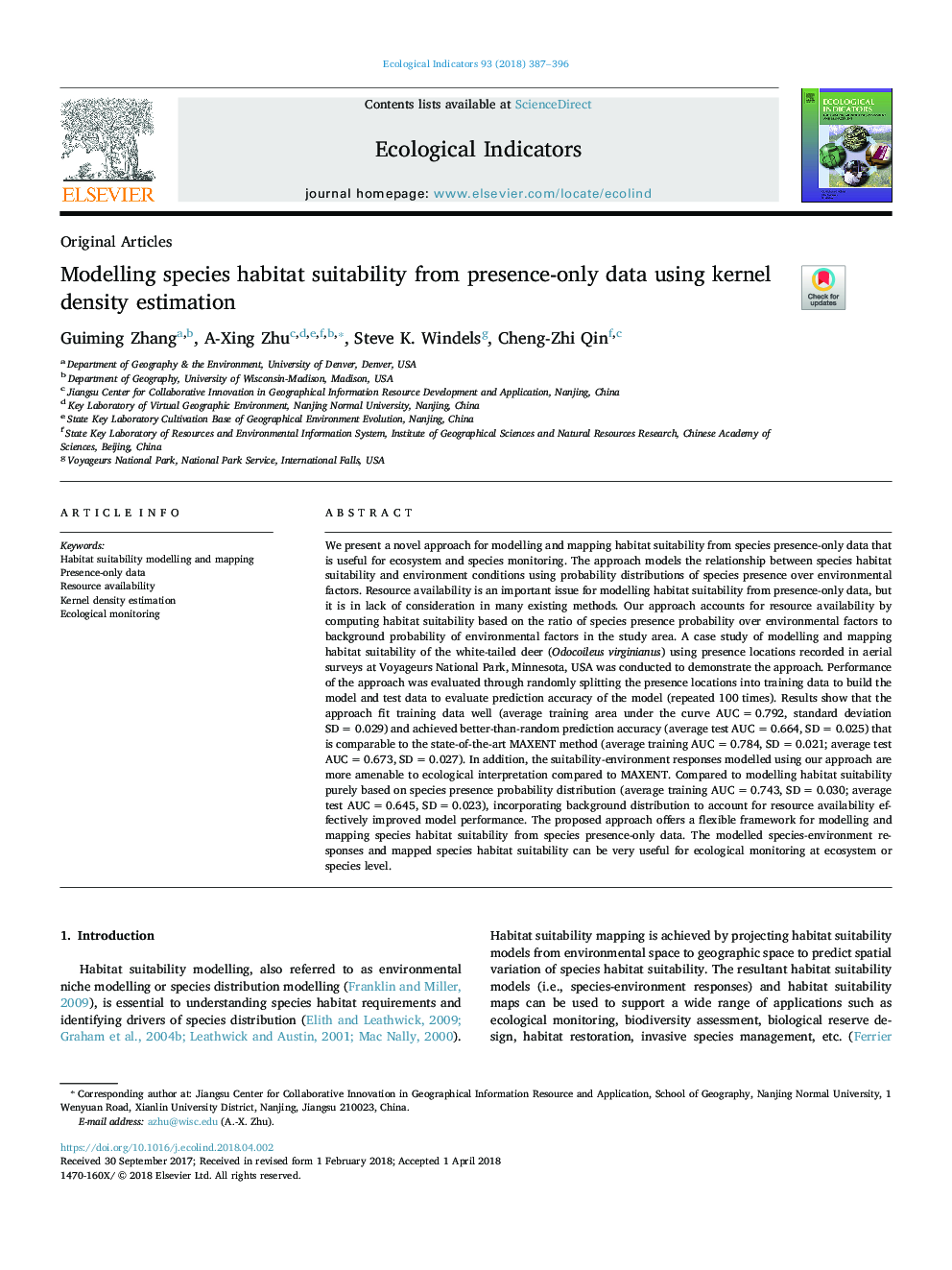| Article ID | Journal | Published Year | Pages | File Type |
|---|---|---|---|---|
| 8845149 | Ecological Indicators | 2018 | 10 Pages |
Abstract
We present a novel approach for modelling and mapping habitat suitability from species presence-only data that is useful for ecosystem and species monitoring. The approach models the relationship between species habitat suitability and environment conditions using probability distributions of species presence over environmental factors. Resource availability is an important issue for modelling habitat suitability from presence-only data, but it is in lack of consideration in many existing methods. Our approach accounts for resource availability by computing habitat suitability based on the ratio of species presence probability over environmental factors to background probability of environmental factors in the study area. A case study of modelling and mapping habitat suitability of the white-tailed deer (Odocoileus virginianus) using presence locations recorded in aerial surveys at Voyageurs National Park, Minnesota, USA was conducted to demonstrate the approach. Performance of the approach was evaluated through randomly splitting the presence locations into training data to build the model and test data to evaluate prediction accuracy of the model (repeated 100 times). Results show that the approach fit training data well (average training area under the curve AUCâ¯=â¯0.792, standard deviation SDâ¯=â¯0.029) and achieved better-than-random prediction accuracy (average test AUCâ¯=â¯0.664, SDâ¯=â¯0.025) that is comparable to the state-of-the-art MAXENT method (average training AUCâ¯=â¯0.784, SDâ¯=â¯0.021; average test AUCâ¯=â¯0.673, SDâ¯=â¯0.027). In addition, the suitability-environment responses modelled using our approach are more amenable to ecological interpretation compared to MAXENT. Compared to modelling habitat suitability purely based on species presence probability distribution (average training AUCâ¯=â¯0.743, SDâ¯=â¯0.030; average test AUCâ¯=â¯0.645, SDâ¯=â¯0.023), incorporating background distribution to account for resource availability effectively improved model performance. The proposed approach offers a flexible framework for modelling and mapping species habitat suitability from species presence-only data. The modelled species-environment responses and mapped species habitat suitability can be very useful for ecological monitoring at ecosystem or species level.
Related Topics
Life Sciences
Agricultural and Biological Sciences
Ecology, Evolution, Behavior and Systematics
Authors
Guiming Zhang, A-Xing Zhu, Steve K. Windels, Cheng-Zhi Qin,
